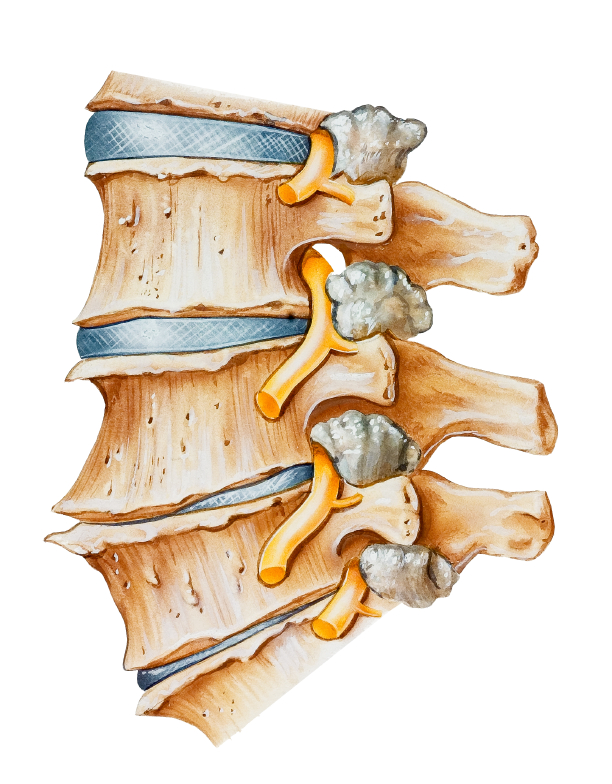Disc Degeneration
 Degenerative disc disease is not really a disease, but is used to describe the normal changes in the spinal discs as a person ages. The discs are made of soft , compressible material between the back bones (vertebrae). As a person ages, the disc become hard and “dried out” and this reduces the ability of the disc to act as shock absorbers and makes them less flexible. As the disc flattens it often bulges onto nerves and the back bones become closer together. These changes are more likely to occur in people who smoke cigarettes and those who do heavy physical work. A significant number of people with disc degeneration have no symptoms. Also in a patient with both back pain and disc degeneration, the disc degeneration does not always cause the pain. Disc degeneration is common in the lower levels of the lumbar spine, L4-L5 and L5-S1. The lower levels experience a great deal of flexion, bending, and torsion, placing greater structural demands on these levels. The L5-S1, or lowest level in the lumbar spine, bears the heaviest loads. While disc degeneration typically begins in the lower lumbar spine, it progresses to successively higher levels as the affected discs become stiffer and an increased demand is placed on the superiorly adjacent discs.
Degenerative disc disease is not really a disease, but is used to describe the normal changes in the spinal discs as a person ages. The discs are made of soft , compressible material between the back bones (vertebrae). As a person ages, the disc become hard and “dried out” and this reduces the ability of the disc to act as shock absorbers and makes them less flexible. As the disc flattens it often bulges onto nerves and the back bones become closer together. These changes are more likely to occur in people who smoke cigarettes and those who do heavy physical work. A significant number of people with disc degeneration have no symptoms. Also in a patient with both back pain and disc degeneration, the disc degeneration does not always cause the pain. Disc degeneration is common in the lower levels of the lumbar spine, L4-L5 and L5-S1. The lower levels experience a great deal of flexion, bending, and torsion, placing greater structural demands on these levels. The L5-S1, or lowest level in the lumbar spine, bears the heaviest loads. While disc degeneration typically begins in the lower lumbar spine, it progresses to successively higher levels as the affected discs become stiffer and an increased demand is placed on the superiorly adjacent discs.
